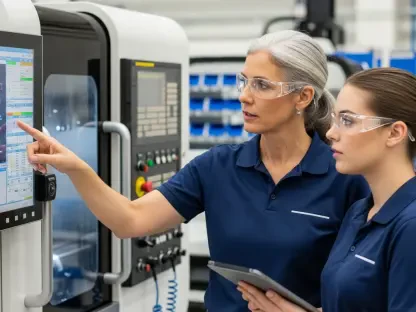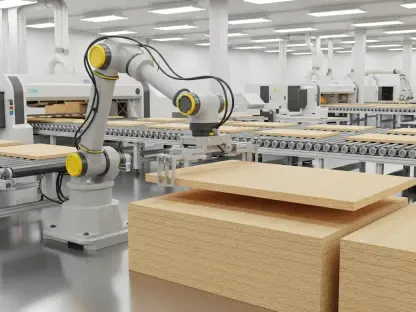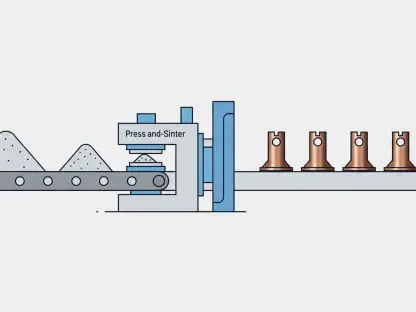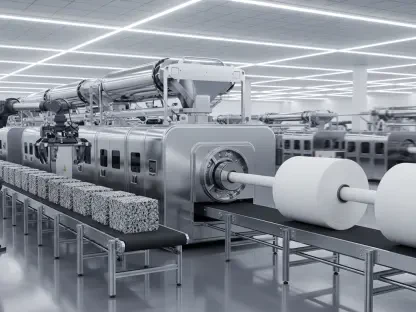The landscape of the automotive industry is undergoing a radical transformation thanks to the substantial advancements in artificial intelligence (AI) and embedded systems. These technologies are redefining what vehicles can do, promising not just enhanced safety but also a more seamless integration into daily life. From overcoming technical challenges to addressing ethical considerations, AI and embedded systems are at the forefront of the autonomous vehicle revolution. The integration of these sophisticated technologies is not merely an improvement but a paradigm shift, heralding a new era in automotive innovation and functionality. As we explore these advancements, it becomes evident that the journey toward full autonomy is as complex and challenging as it is revolutionary.
Overcoming Technical Challenges in V2X Technologies
One of the pivotal hurdles in the journey toward fully autonomous vehicles is the development and implementation of V2X (Vehicle-to-Everything) technology. The accuracy of location data collected from nearby vehicles and Road Side Units (RSUs) is crucial for the efficacy of safety systems like Forward Collision Warning. However, environmental factors often interfere with the signal strength of GPS sensors, posing a significant challenge. Accurate and reliable data collection is imperative to ensure these systems function as intended. This accuracy directly impacts the ability of vehicles to communicate with each other and with infrastructure, which is essential for preventing accidents and optimizing traffic flow.
Another major technical challenge lies in managing the vast amounts of data generated by V2X systems. This necessitates robust infrastructures, which are often lacking in developing and underdeveloped regions. Countries that do not have sufficient technological support must significantly upgrade their infrastructure to facilitate the adoption of V2X technology effectively. The importance of robust infrastructure cannot be overstated, as it forms the backbone for the functionality and reliability of these systems. Without such infrastructure, the benefits of V2X technology in terms of safety and efficiency cannot be fully realized, leaving a significant gap in the potential advancements.
Additionally, there’s the challenge of real-time data processing. The immense data flow generated must be processed swiftly to make instantaneous decisions. This is where advanced computing solutions and edge computing come into play, highlighting the necessity for powerful embedded systems within the vehicle itself to manage these tasks efficiently. Efficient data processing ensures that vehicles can respond promptly to dynamic road conditions and potential hazards, which is vital for the safety and smooth operation of autonomous vehicles. The integration of these advanced solutions represents a leap forward in ensuring the real-time efficacy of V2X technologies.
Innovations in Device Driver Development
Device driver development has seen remarkable innovations, largely driven by the need for seamless integration across various platforms. Mohammad Shafi, a seasoned expert in this field, emphasizes the critical role of Operating System (OS)-agnostic drivers. These ensure that device drivers can be seamlessly integrated across diverse platforms with minimal need for code modifications, presenting a significant leap forward in standardization and compatibility. Such advancements are crucial for ensuring that different components within autonomous vehicles can work harmoniously, regardless of the underlying OS, thereby reducing complexity and enhancing operational efficiency.
Shafi’s approach focuses on modular code design, which promotes scalability and adaptability to evolving project requirements and future technological advancements. By optimizing driver execution times, notable improvements in power consumption and system efficiency have been achieved. This is particularly important in the automotive industry, where energy-efficient solutions are not just an advantage but a necessity. The ability to scale these solutions means that as technology progresses and evolves, the existing systems can be upgraded seamlessly without extensive overhauls, ensuring long-term sustainability and cost-effectiveness.
Moreover, the development of such device drivers involves rigorous testing and validation to meet automotive safety standards. The robustness and reliability of these drivers are paramount, considering the high stakes involved in automotive applications. This development paradigm ensures that embedded systems within autonomous vehicles can operate reliably under a wide range of conditions. Such rigorous standards are essential for building consumer trust and ensuring that technological advancements translate into real-world safety and reliability on the roads. This focus on reliability and efficiency makes these technological innovations not just theoretical advancements but practical solutions with profound impacts.
The Critical Role of AI in Automotive Systems
The integration of AI into automotive systems necessitates a fine balance between innovation and practical application. Real-world constraints, such as safety regulations, production timelines, and cost considerations, play a significant role in shaping these solutions. AI solutions can only be as effective as the understanding of automotive engineering, vehicle dynamics, and sensor technologies that support them. The sophistication of AI algorithms must be matched with a deep understanding of the mechanical and environmental contexts in which they operate, ensuring that theoretical innovations translate into practical, reliable solutions.
Effective AI implementation requires collaboration across multiple disciplines, including software, electrical, and mechanical engineering. This interdisciplinary approach is essential for achieving seamless integration and adapting to the continuous emergence of new technologies and trends. Augmenting vehicles with AI capabilities involves an intricate dance of balancing hardware and software to ensure reliability and safety. The success of AI integration depends on breaking down silos between different engineering specialties and fostering a holistic approach to vehicle design and functionality.
AI algorithms embedded within vehicles interpret sensor data from lidar, radar, and cameras, allowing for real-time environmental perception. These AI-driven systems analyze sensor inputs to detect objects, recognize road features, and make instant decisions in response to complex road scenarios. The accuracy of these algorithms is crucial for safe and reliable vehicle operation. The ability to process vast amounts of data in real-time and make split-second decisions is what empowers autonomous vehicles to navigate complex environments and make driving decisions with human-level intuition and speed.
V2X Technology and Its Impact on Vehicle Safety
V2X technology has a profound impact on vehicle safety, significantly enhancing systems like Forward Collision Warning. This system provides critical alerts during emergencies, such as when a preceding vehicle abruptly brakes, prompting immediate corrective actions from nearby vehicles. Such capabilities dramatically reduce the likelihood of collisions, underscoring the life-saving potential of V2X technologies. The ability to communicate and react in real-time to potential hazards is a game-changer in automotive safety, offering a proactive approach to accident prevention.
Enhancements in pedestrian detection systems also stand out, especially in identifying individuals in blind spots. These systems enable autonomous vehicles to recognize and respond to pedestrians in risky scenarios, thus preventing potential accidents. The role of Road Side Units (RSUs) is equally vital, as they broadcast alerts about adverse weather conditions like icy roads or flooding, enabling vehicles to make informed decisions to avoid such routes or take necessary precautions. These advancements ensure that autonomous vehicles can navigate not only complex traffic scenarios but also adapt to changing environmental conditions, thereby enhancing overall road safety.
In addition to immediate safety benefits, V2X technology contributes to overall traffic efficiency. By facilitating communication between vehicles and infrastructure, traffic flow can be optimized, reducing congestion and enhancing the travel experience for all road users. Such advancements pave the way for smarter, safer, and more efficient transportation systems. The integration of V2X technology represents a significant leap toward creating intelligent transportation networks that not only improve safety but also make daily commutes more efficient and less stressful for drivers and passengers alike.
Future Trends in Smart Transportation Systems
The next decade is poised to witness significant evolution in smart transportation systems, propelled by technological advancements and changing mobility patterns. Autonomous vehicles are set to become more prevalent, offering safer and more efficient travel options. As these technologies mature, the promise of a future where vehicle collisions are a rarity becomes more conceivable. The potential for reduced traffic fatalities and injuries, lower congestion, and optimized travel times presents a transformative vision for urban mobility.
The proliferation of electric vehicles (EVs) will shape the automotive landscape, supported by robust charging networks and advancements in battery technology. Increased adoption of EVs will necessitate the development of comprehensive charging infrastructure and improvements in battery efficiency and longevity. The environmental benefits of EVs, combined with autonomous capabilities, create a compelling case for a future where transportation is both sustainable and highly efficient. The integration of AI and embedded systems will play a pivotal role in managing the energy needs and operational efficiencies of these next-generation vehicles.
Moreover, smart cities will leverage data analytics and AI to optimize traffic management, reduce congestion, and enhance urban mobility. By integrating various mobility platforms, including public transit and ride-sharing services, cities can create cohesive, accessible, and eco-friendly transportation solutions. The future of smart transportation systems involves a highly interconnected network where AI-driven analytics provide real-time insights and predictive capabilities to manage traffic and transportation resources effectively. This holistic approach to transportation innovation not only addresses current inefficiencies but also anticipates future challenges in urban mobility.
The advancements in autonomous vehicle technology, combined with the move towards sustainable, electric transport, signal a new era in how we approach mobility. The seamless integration of these technologies into smart transportation systems will redefine urban landscapes, making them more livable and connected. The road ahead holds tremendous promise, as AI and embedded systems continue to push the boundaries of what is possible, making the dream of fully autonomous, intelligent transportation systems a reality.
Ethical and Privacy Challenges in V2X Technology Deployment
Deploying V2X technology entails handling sensitive data, including location information and driving behaviors. This raises significant privacy and ethical concerns. Ensuring the privacy of this data and protecting it from unauthorized access or misuse is paramount. V2X communication networks are also susceptible to cybersecurity threats, such as hacking and data tampering, necessitating robust protection measures. The potential for malicious attacks on these networks poses a severe threat to the safety and reliability of autonomous vehicles, making cybersecurity a critical focus area.
Moreover, there is a potential risk of disclosing the identity and personal information of vehicle occupants through V2X communication, which presents an ethical challenge in balancing effective communication with preserving individuals’ anonymity. Navigating these challenges requires addressing evolving regulatory requirements and standards while maintaining technological innovation and market competitiveness. The ethical implications of data collection and usage in autonomous vehicles underscore the need for stringent privacy policies and regulatory frameworks to protect consumer rights.
Automakers and technology developers must work closely with regulators to establish robust data protection standards and ensure compliance with privacy laws. This collaboration is essential for fostering trust and confidence among consumers, who may be wary of the potential misuse of their personal data. Transparency in data handling practices and clear communication of privacy policies are critical components of building this trust. The ethical deployment of V2X technology involves a delicate balance between leveraging data for enhanced functionality and protecting the privacy and rights of individuals.
As the automotive industry continues to innovate, addressing these ethical and privacy concerns will be crucial for the widespread acceptance and adoption of autonomous vehicles. The successful deployment of V2X technology hinges on establishing a secure and ethical framework that prioritizes consumer privacy and data protection. By proactively addressing these challenges, the industry can pave the way for a future where autonomous vehicles are not only technologically advanced but also ethically sound and trusted by the public.
Conclusion
The automotive industry is experiencing a dramatic transformation spurred by significant advances in artificial intelligence (AI) and embedded systems. These cutting-edge technologies are redefining vehicle capabilities, offering promises of increased safety and more seamless integration into everyday life. AI and embedded systems are central to the revolution of autonomous vehicles, tackling not only technical challenges but also addressing ethical concerns. The incorporation of these advanced technologies represents more than just incremental improvements; it is a paradigmatic shift that signals a new era in automotive innovation and functionality.
As we delve deeper into these advancements, it becomes clear that the path to full autonomy is both complex and revolutionary. These technologies make it possible for vehicles to think, learn, and make decisions, thus mimicking human drivers but with higher efficiency and reduced error margins. The journey to achieving fully autonomous vehicles involves overcoming multifaceted obstacles, including technical limitations, legal frameworks, and public acceptance. Yet, the ultimate goal remains—a future where autonomous vehicles are commonplace, dramatically changing how we commute, enhancing safety, and improving overall quality of life. This transformative journey marks a significant milestone in the ever-evolving landscape of automotive technology.









